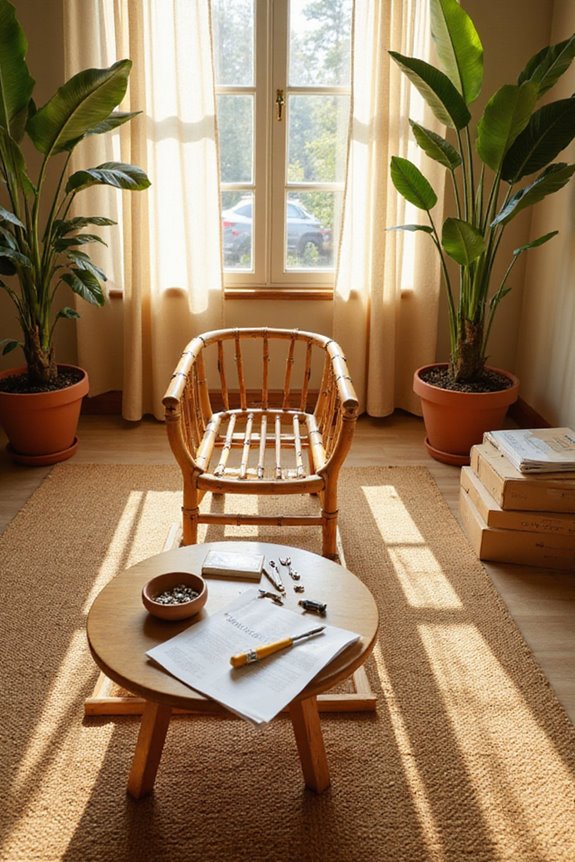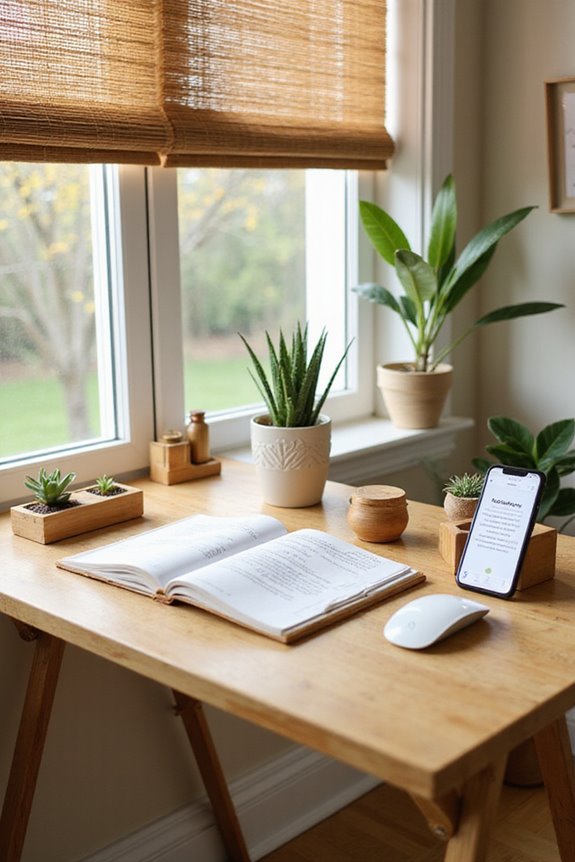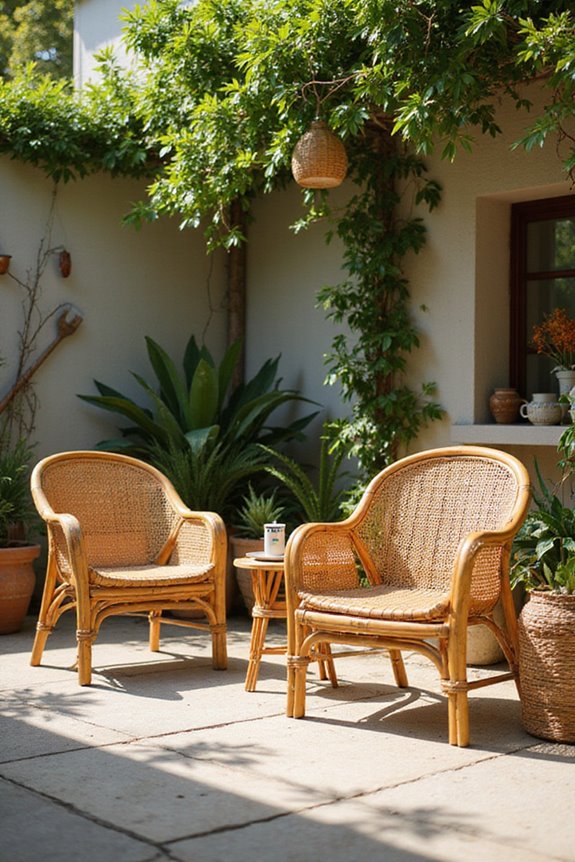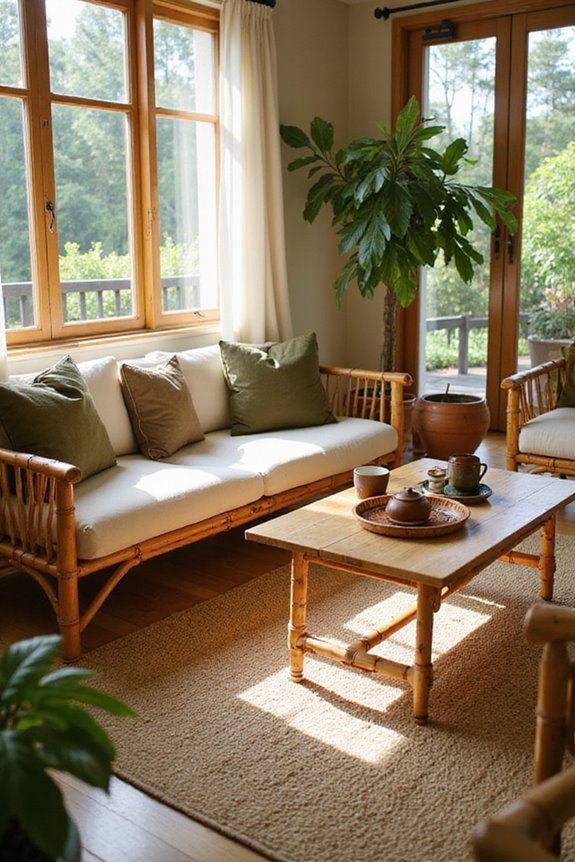To assemble bamboo furniture, we first gather tools like scissors and drills, then cut bamboo poles to about 1 meter for frames. Next, we lay out the pieces by function, making temporary connections for adjustments. For strength, we use lashing techniques and reinforce with wooden pins. After aligning legs for balance, we finish with polyurethane varnish for protection. This guarantees our bamboo furniture is not only functional but also visually appealing. More detailed steps await us ahead.
Key Takeaways
- Select straight bamboo poles and cut them to size for a sturdy chair frame, typically around 1 meter in length.
- Organize bamboo pieces by function and make temporary connections with rope or clamps for adjustments before final assembly.
- Use lashing techniques and reinforce connections with wooden pins to ensure stability and strength in the furniture structure.
- Carefully align and position legs to maintain symmetry and balance, checking for flush overlaps before drilling holes.
- Finish with polyurethane varnish for protection, allowing each coat to dry completely and lightly sanding between applications for a smooth surface.
Preparation and Tools Needed
Before we start assembling bamboo furniture, we need to make certain we’re well-prepared. Understanding bamboo characteristics is vital; we want straight poles for quality and ease in assembly. First, we select the right bamboo and then straighten and size it. Typically, we cut pieces to about 1 meter for chair frames.
Next, we gather our tools. Important cutting tools include scissors and knives for shaping. Hand drills help with making holes, while hammers and nails secure our structure. Regular tool maintenance keeps everything functional, so let’s make certain our tools are in good shape before we begin.
Lastly, a clean workspace is essential for efficiency and safety. With preparation done, we’re ready to create something beautiful together. Additionally, it’s important to note that bamboo is a rapidly renewable resource, making it an excellent choice for sustainable furniture projects.
Initial Assembly Steps
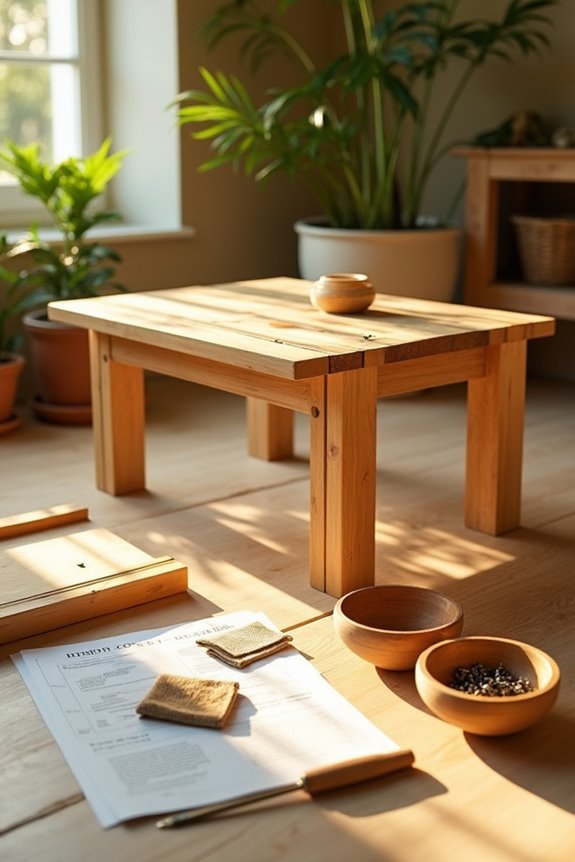
Starting the assembly of bamboo furniture involves several essential steps that set the foundation for a sturdy and aesthetically pleasing final product. First, we’ll focus on initial positioning. Lay out all bamboo components according to the design specifications, ensuring each piece is organized by function, like legs and frames. Next, we’ll make temporary connections using rope or clamps to hold everything in place before final fastening. This allows us to adjust and confirm that all parts fit together seamlessly. We should also insert threaded rods or dowels to maintain correct spatial relationships between bamboo members. By taking our time with these initial steps, we create a solid base for the final assembly, ensuring our furniture will be both beautiful and functional. Additionally, sustainably sourced materials contribute to the eco-friendliness of the furniture, making the assembly process even more rewarding.
Fastening and Securing Components
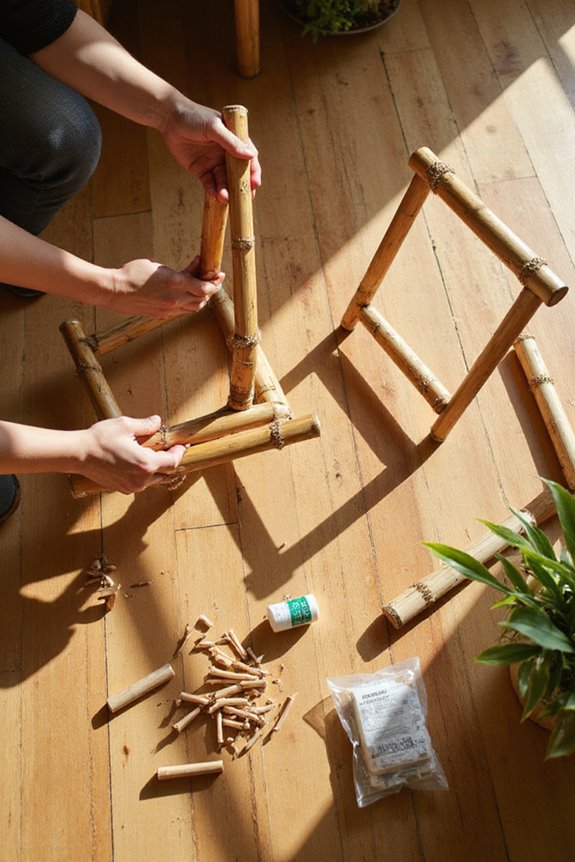
When assembling bamboo furniture, fastening and securing the components properly is essential for durability and stability. We can use various traditional fastening techniques to guarantee joint stability. For instance, lashing with natural twine provides strong connections without drilling into the bamboo. Additionally, mortise and tenon joints offer a snug fit, avoiding the risk of splitting.
- Lashing Techniques: Diagonal, cross, and mast throw lashings improve strength.
- Dowels and Pegs: Wooden pins can reinforce connections without metal fasteners.
- Diagonal Supports: Placing these just above nodes enhances stability. Furthermore, ensuring that bamboo is treated for moisture and UV resistance can significantly prolong the life of your furniture.
Adjustments and Alignment
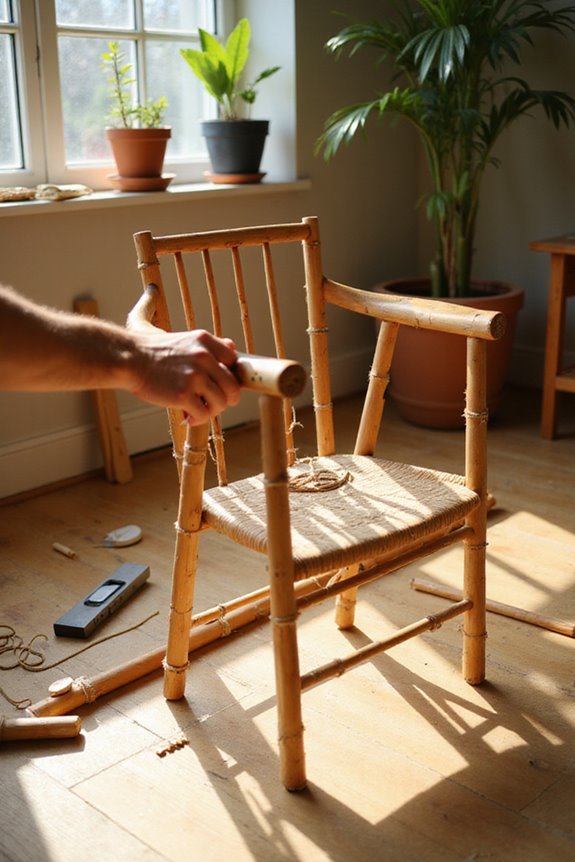
Adjustments and alignment play a key role in guaranteeing our bamboo furniture is both stable and functional. First, we need to position the front legs carefully at marked spots for balanced support. Next, aligning the other legs parallel and equidistant maintains symmetry. For pole adjustments, we can slide pins into the carved holes, fine-tuning the frame shape.
Moreover, joint alignment is essential. We should verify overlapped joints are flush before drilling holes. It’s also important to align drilled holes through pins and legs for secure insertion. Finally, we must check each leg’s position to prevent rocking. By following these steps, we’ll create sturdy bamboo furniture that we can all be proud of. Additionally, ensuring ideal humidity levels during assembly can help maintain the integrity of the bamboo material.
Finishing Touches
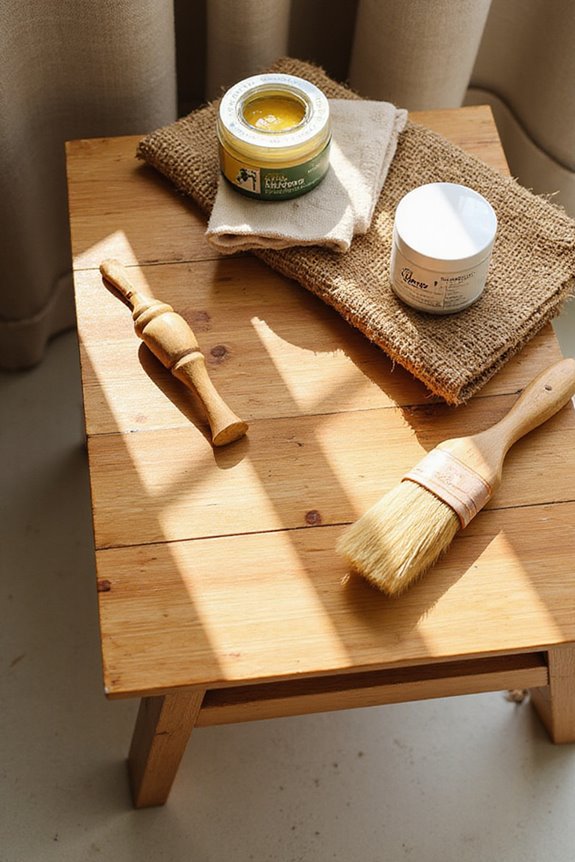
Finishing touches are vital for enhancing the appearance and durability of our bamboo furniture. To achieve this, we can use effective finishing techniques like applying polyurethane varnish. This durable finish protects bamboo’s surfaces from scuffs. We should apply it with high-quality brushes and allow each coat to dry completely. Lightly sanding between coats with 280-grit sandpaper guarantees smoothness.
For added beauty, we can experiment with stains, starting with a lighter base coat and layering deeper tones. Regular cleaning with mild soap and microfiber cloths keeps our furniture looking its best. After finishing, we must let the furniture cure fully for several days. This step is essential for surface protection, assuring longevity and aesthetics. Additionally, using OEKO-TEX certification ensures that the materials used in finishing are free from harmful substances, promoting a safer environment.
Frequently Asked Questions
How Long Does Bamboo Furniture Typically Last?
When we think about bamboo durability, it typically lasts 10–20 years with good care. By following some maintenance tips, like regular cleaning and proper storage, we can help our bamboo furniture last even longer together.
Can Bamboo Furniture Be Painted or Stained?
Oh, we thought bamboo furniture was too perfect to change! But really, there’s a world of painting techniques and staining options out there. Let’s explore how we can transform our bamboo into something uniquely ours!
Is Bamboo Furniture Suitable for Outdoor Use?
Is bamboo furniture suitable for outdoor use? Absolutely! With proper outdoor maintenance, we can enjoy its durability. Let’s guarantee we treat it well to maximize its lifespan and enhance our outdoor living experience together.
How Do I Repair Scratches on Bamboo Furniture?
When we tackle scratch repair on bamboo furniture, we focus on careful cleaning and sanding. With proper bamboo care, we can restore its beauty, ensuring our pieces remain cherished parts of our homes for years.
What Is the Weight Capacity of Bamboo Furniture?
Ever wondered about bamboo furniture’s weight capacity? With impressive bamboo strength and durability, we can find options supporting up to 500 lbs! It’s perfect for creating a welcoming space for all our friends and family.

